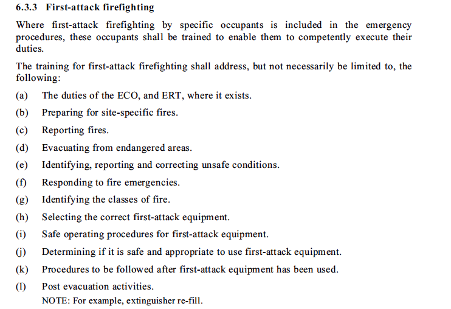Frequently Asked Questions - Workplace Emergency Procedures
In this blog we explore some of the most commonly asked questions relating to emergency procedures in a workplace setting.
Do I have to have an Emergency Plan in Place?
Yes - under the model WHS laws, all workplaces must have an emergency plan in place.
The plan must let workers and visitors know what to do in an emergency.
Your plan should be easy to access and reviewed and updated regularly.
What does the plan have to cover?
Emergency procedures, including all of the following:
how to effectively respond to an emergency
evacuation procedures
notifying emergency services quickly
medical treatment and help
communication protocols between the emergency response coordinator and all people at the workplace
when and how to do emergency procedure testing
information, training and instructions to relevant workers about the emergency procedures.
This is general guidance that applies under regulation 43 of the Work Health and Safety (WHS) Regulations. Certain workplaces and activities have specific additional duties for emergency plans.
What Training must be provided?
You must provide training to your workers, including on procedures for:
evacuations and assembly points
equipment
first aid
safely shutting down machinery.
You may need different training for different people, for example:
induction courses for new workers
refresher training for existing workers
training for short-term contractors or visitors at the workplace (this may not need to be as extensive as it is for workers)
specific training for people with formal roles in an emergency – for example, fire wardens, floor wardens, first aid officers.
What is the relevant Australian Standard
AS 3745 2010 specifies the minimum requirements for the establishment, validation and implementation of an emergency plan for a facility to provide for the safety of occupants of that facility and its visitors leading up to, and during an evacuation.
Is the Australian Standard Mandatory?
Each and every organisation must comply with State based legislation that includes requirements for emergency prevention and planning. The compliance with this legislation is a legal requirement and failing to do so may result in legal ramifications incorporating severe penalties.
Whilst not legally binding, The Australian Standard AS 3745 – 2010 Planning for emergencies in facilities is produced by Standards Australia and is widely accepted throughout industry as the benchmark when it comes to implementing emergency procedures and training within an organisation.
What does Australian Standard 3745-2010 say about Warden Training?
Exert from Australian Standard 3745-2010
What does the Australian Standard 3745-2010 say about extinguisher training?
Exert from Australian Standard 3745-2010
What does the Australian Standard 3745-2010 say in respects to number of Wardens?
Appendix F from Australian Standard 3745-2010
Do modern work place arrangements impact on the number of Wardens (ECO Members)?
Yes – when analysing the information in the Australian Standard relating to the number of Wardens, it is clear that a workplace must always have sufficient Wardens for any emergency. This is more challenging in modern workplaces due to the volume of staff on work from home arrangements. In many cases workers working from home work a small number of days from the office. This means that modern workplaces have far less stability for staff on site.
Although the number of staff on site varies the other attributes such as layout, risks etc do not change therefore when selecting Wardens the organisation needs to be mindful of ensuring that there are sufficient staff on site at all times of business operation and either select staff who work exclusively from the office or train enough staff to have adequate coverage at all times.
Alternatively, workplaces may decide on a higher level of base training for all staff to reduce the volume for ECO members required. (where risk allows)
For businesses operating in Victoria, do WorkSafe Victoria have specific guidance
Yes – the Workplace Amenities and Work Environment Compliance code has a chapter specifically on responding to emergencies. This guide very much reflects the same guidance as Work Safe Australia.
(https://www.worksafe.vic.gov.au/resources/compliance-code-workplace-amenities-and-work-environment)





